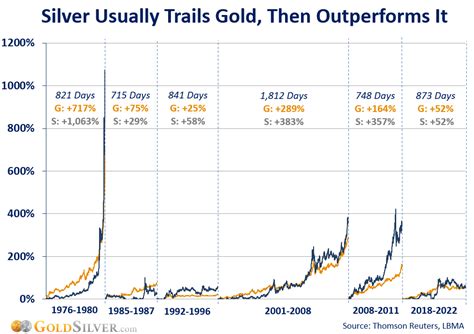Introduction

The global precious metals market has experienced significant volatility in recent years, with silver prices fluctuating amidst economic and geopolitical uncertainties. This article delves into the complex factors influencing the price of silver per ounce and explores the potential for growth in the coming years, particularly in the lead-up to 2025.
Historical Performance and Demand Drivers
Silver prices have historically been influenced by various factors, including:
Supply and Demand Dynamics
Supply: Silver is primarily mined from ores, with Peru and Mexico being the leading producers. Global silver mine production has been relatively stable over the past decade, averaging around 25,000 metric tons per year.
Demand: Industrial demand accounts for approximately 50% of silver consumption, primarily in electronics, solar panels, and jewelry. Investment demand, driven by factors such as inflation and geopolitical risks, also plays a significant role.
Economic Conditions
Strong economic growth often leads to increased demand for silver in industrial applications, driving up prices. Conversely, economic downturns can dampen demand and exert downward pressure on prices.
Inflation and Currency Fluctuations
Inflation can erode the purchasing power of currencies and increase demand for silver as a store of value. Fluctuations in the US dollar, which is the global reserve currency, can also impact silver prices.
Silver Price Forecast for 2025
Predicting the future price of silver is inherently uncertain; however, several analysts have provided forecasts for 2025:
- Kitco Metals Outlook: $25-$30 per ounce
- Silver Institute: $23-$27 per ounce
- Forbes: $20-$25 per ounce
These forecasts suggest a potential for moderate growth in silver prices over the next three years, driven by factors such as:
- Increased industrial demand for silver in electronics and green technologies
- Growing investment demand amidst global uncertainties
- Potential supply disruptions due to geopolitical conflicts or environmental regulations
Implications for Market Participants
Understanding the factors influencing silver prices is essential for market participants to make informed decisions.
Investors
Investors may consider silver as a portfolio diversifier and hedge against inflation. However, they should be aware of price volatility and the potential for long-term fluctuations.
Producers
Mining companies should monitor global demand trends and invest in exploration and production to meet future demand.
Manufacturers
Manufacturers using silver in industrial processes should understand the impact of silver prices on their operations and explore cost-efficient alternatives when necessary.
Common Mistakes to Avoid
- Overestimating short-term price movements
- Investing in silver without a clear understanding of the risks
- Buying physical silver without considering storage and security costs
Pros and Cons of Silver Investment
Pros
- Potential for price appreciation over time
- Diversification benefits
- Hedge against inflation
Cons
- Volatility and price fluctuations
- Storage and security costs
- Supply disruptions
Market Insights
- Emerging Industrial Applications: Research and development in fields such as nanotechnology and medicine are exploring novel applications for silver, indicating potential growth opportunities for the industry.
- Environmental Regulations: Increasing environmental concerns may drive demand for silver in sustainable technologies, such as solar panels and electric vehicles.
- Global Economic Outlook: The post-pandemic economic recovery and ongoing geopolitical uncertainties are expected to shape the demand for silver in the coming years.
Tables
1. Global Silver Mine Production (2015-2021)
| Year | Production (metric tons) |
|---|---|
| 2015 | 27,300 |
| 2016 | 26,500 |
| 2017 | 25,900 |
| 2018 | 25,300 |
| 2019 | 25,500 |
| 2020 | 24,300 |
| 2021 | 24,800 |
2. Global Silver Demand (2015-2021)
| Year | Industrial (metric tons) | Investment (metric tons) | Total (metric tons) |
|---|---|---|---|
| 2015 | 13,200 | 20,900 | 34,100 |
| 2016 | 12,800 | 19,600 | 32,400 |
| 2017 | 12,600 | 21,500 | 34,100 |
| 2018 | 12,800 | 23,200 | 36,000 |
| 2019 | 12,900 | 24,800 | 37,700 |
| 2020 | 11,400 | 26,000 | 37,400 |
| 2021 | 12,500 | 29,200 | 41,700 |
3. Silver Price Forecast (2022-2025)
| Year | Kitco Metals Outlook | Silver Institute | Forbes |
|---|---|---|---|
| 2022 | $18-$22 | $19-$23 | $17-$21 |
| 2023 | $20-$24 | $21-$25 | $19-$23 |
| 2024 | $22-$26 | $23-$27 | $20-$24 |
| 2025 | $25-$30 | $23-$27 | $20-$25 |
4. Uses of Silver
| Category | Applications |
|---|---|
| Industrial | Electronics, solar panels, jewelry |
| Medical | Antibacterial agents, dental alloys |
| Photographic | Film, photographic paper |
| Investment | Bullion, coins, bars |
| Other | Batteries, catalysts, glassmaking |
Conclusion
The future price of silver is influenced by a complex interplay of factors, including supply and demand dynamics, economic conditions, inflation, and currency fluctuations. While forecasts for 2025 suggest potential for moderate growth, investors and market participants should carefully consider the risks and opportunities before making any decisions. Understanding the drivers of silver prices and staying abreast of market insights will enable informed decision-making and mitigate potential pitfalls.



